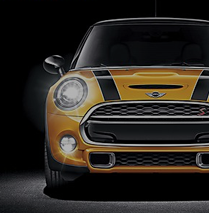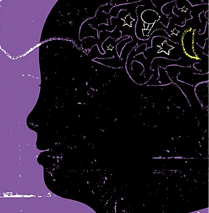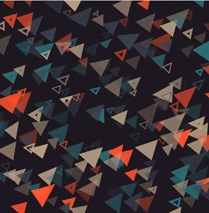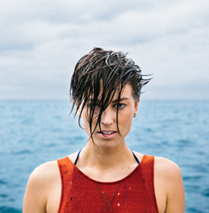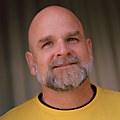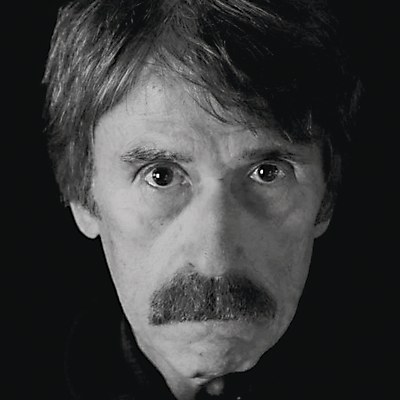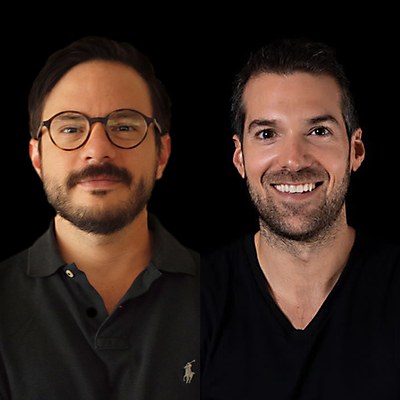How did you discover your interest in design? Ever since I was a kid, I’ve been fascinated by futuristic things, so I decided to become a product designer. I started sketching the most future-forward stuff I could: cozy space habitats, hyper-aerodynamic vehicles (yes, they could fly), and the “CommsCube,” a connected mobile device giving you on-demand access to the world’s knowledge and the ability to communicate with anyone. Apart from a very unergonomic form factor (a handheld cube!) the design seemed like a great idea to me. Fifteen years later, that idea would become a reality in the shape of the smartphone—designed by someone else, unfortunately.
Then, my first setback occurred. Although my mother had supported me with plenty of tea and cookies throughout my early creative phase, my application to study product design in my small hometown college in Germany was rejected. Apparently, I wasn’t as skilled in sketching ideas as I was in dreaming them up. But I managed to take away some inspiration from this: anything we can imagine and visualize can be built and made a reality.
How did you begin at the San Francisco–based brand strategy and design studio Landscape, and what do you do there as a strategy director? After first pivoting to studying graphic design and then again towards marketing and design strategy in Berlin, I surfed the wave of the early internet boom years, working on global digital projects in London and Tokyo. Then, after a life-changing, eighteen-month trip around the world, I settled in Singapore with my wife Teresa and started as a brand consultant at Landor, a global brand consultancy—the job that eventually brought me to San Francisco. I left Landor in 2011 to build out my network as a freelance creative strategist and worked with some exciting branding firms and startups in the Bay Area. Since joining Landscape full time in 2019, I’ve been helping clients shape advantaged positionings and strategies for compelling narratives, identities and experiences. This means diving deep into the business strategies of emergent ventures, their customers’ mindsets, category trends and competitive landscapes. My aim with every project is to surface a unique insight that inspires and informs distinctive brand identities, digital experiences and launch campaigns.
At Landscape, you brand plenty of startups. What challenges and opportunities are unique with this type of client? Our client mix at Landscape comprises about 60 percent growth-stage startups looking to scale their innovation and 40 percent established, larger organizations launching new product or service initiatives. But it’s always exciting to collaborate with fast-moving founder teams on ambitious ventures, which can span a broad range of future-oriented topics: from social innovation like inclusive housing advocacy, civil rights education and mental fitness, to AI robotics, synbiotics, climate tech, biolab automation and more sustainable ways to grow food, just to name a few.
Here are some of the startup branding challenges we work through with our clients as part of our programs: How can we operationalize design to rapidly multiply awareness, credibility, engagement and traction for their ideas? How can we translate complex technologies into simple, compelling narratives that position these innovations as simultaneously aspirational yet accessible? And how can we help them own an emergent category rather than compete with others in an existing one?
Landscape has worked across many areas, from civil rights education to microbial science and, more recently, digital architecture to support the US healthcare system. How do you communicate these complex ideas and technologies to a broad audience? What makes Landscape unique is that our capabilities aren’t locked into supporting only a few, narrow, vertical-industry categories—unlike many other boutique design firms. Instead, our expertise centers on a broad spectrum of industries. That’s only become possible because everyone at Landscape shares a love for learning quickly and deeply about all things new.
Over the years, our team has become good at translating our clients’ complex social, scientific or technological innovations into simple, powerful ways to signal their purpose in the world, together with the specific value they create for distinct audiences. We do this by articulating clear narratives, often as a first step in each project, starting with the “why we exist”, their long-term purpose in the world, supported by the “how we create value,” the higher-order promise that resonates across all audiences. This is anchored in the “what we uniquely offer,” specific value propositions tailored to distinct audiences that need to be brought together and engaged for brands to scale.
Tell us about a Landscape project where you had to unite diverse perspectives to help a brand resonate with a broad audience. How did you accomplish this? During the early days of the COVID-19 pandemic, we worked on the brand evolution of Curative. This connected health services provider had begun rolling out the mobile infrastructure for rapid COVID testing at more than 10,000 sites nationwide. Its team needed to evolve the brand’s narrative beyond its origin in lab sciences to drive broader awareness, trust and engagement with individuals and communities in big cities and remote, rural areas.
Because of a very divisive political climate around the pandemic, it was critical to shape an iconic, universally relatable brand identity and narrative that conveyed the new service with clarity, confidence and optimism. Tapping into the universal notion that a community’s wellbeing is fundamental to individual health, Curative set new standards for making essential health services easier to access for communities everywhere. This brand idea and identity resonated across the different audiences that needed to be brought together to affect change, from individuals and families to civic leaders and corporate executives.
What skills do designers have for creating a better future, and how can they effectively apply these to change hearts and minds? I prefer the word futures plural to future singular. I believe that humanity as a whole isn’t passively barreling toward some single-truth future waiting for us around the corner. Speaking of futures implies that we can dream up, design, influence and communicate the exact version of the future or world we’d like to live in. And for us to begin building better futures, we first need to make them visible, tangible, shareable and, as a result, debatable—essentially, the job of good designers.
What are some skills for this? The imagination to dream up what’s not imaginable. The foresight to anticipate, understand and influence change. Empathy to connect through universal human thoughts and emotions. And the expressive craft of tangibly bringing desirable futures to life so we can make up our minds and hearts about them.
At worst, if these skills are wielded unwisely, good design will seduce us into buying more stuff we don’t actually need or even want. At best, good design can stimulate new conversations, shape or reshape perspectives on what matters, and shift us toward better ways of thinking and doing—better futures.
In your personal life, you’ve traveled and worked across Europe, the Asia-Pacific region and the United States. How have these experiences impacted your thoughts on design? Traveling has always been a part of my life and my family. Jumping into a green VW camper van to explore Europe for months and ordering desserts in different languages with my younger sister made growing up more fun. Later, living in different cultures for longer became an ongoing adventure that profoundly influenced my worldview and the skills I bring to work every day.
I’ve observed how differently people of different cultures think, speak and act on the surface, while deep down, we’re all more similar than different in our shared hopes, fears and ambitions. I’ve learned to recognize social patterns like trends earlier and more clearly, and I’ve honed my instinct around bringing people together through the right images and narratives. I’ve been able to take more creative license to experiment with language than native speakers because I had to learn more than one language.
Lastly, my travels have led me to my “Pale Blue Dot” moment, inspired by the essay of astrophysicist Carl Sagan. My takeaway: as big as our world seems, as complex as our lives appear, it’s worth pausing to realize that whatever we dream, design or do can be in service of protecting this precious little planet hurtling through space with us on it.
What excites you about design right now? I’m excited about seeing the sense of purpose, optimism and urgency so many designers bring to their work in service of better futures across many industries. I’m excited about talented designers leaving well-paid corporate jobs to join ambitious “moonshot” ventures that are inventing solutions to system-level challenges, from tackling the climate crisis to improving health and wellbeing, food security, and the rest. I’m excited about design becoming a transformative tool for evolving what’s possible in almost every category of life: from biology, health and urban planning, to what we eat and how we can live better on- and off-planet.
What is the biggest challenge currently facing designers? Outside of Landscape, I’ve had many interesting conversations with designers about where they are in their careers and where they’d like to go next. This career navigation challenge is a recurring theme: How can I find the place where I’ll get paid well for doing what I love while doing it for the right cause or company? For many designers today, it’s still a hard “either/or” decision. I count myself lucky to have found a place where we’re actively working toward a more perfect balance for everyone.
Apart from that career challenge? I’d say it’s the same generational challenge we all face: the climate crisis. So, it might be a good idea to use your good design skills to help reverse it…
Do you have any advice for people just entering the field of design? If I had to give my 20-year-old self some pointers, I’d probably say:
Design your niche in evolution. Study diverse bodies of knowledge to create something interesting where they overlap. Learn a diverse set of skills and converge them to create a new, distinctly ownable way of designing for the world.
Read widely and travel wildly. Build intellectual breadth by reading broadly while developing your empathy and expressive skills through lived experiences, like rugged adventure travel where you rub shoulders with locals.
Realize that failure is part of evolution. Being creative means generating prolifically, throwing away work constantly and being ready to fail—sometimes utterly.
Aim to spend your craft and time wisely. Everyone has a limited time in life and our careers, so make yours count for what matters most. ca


